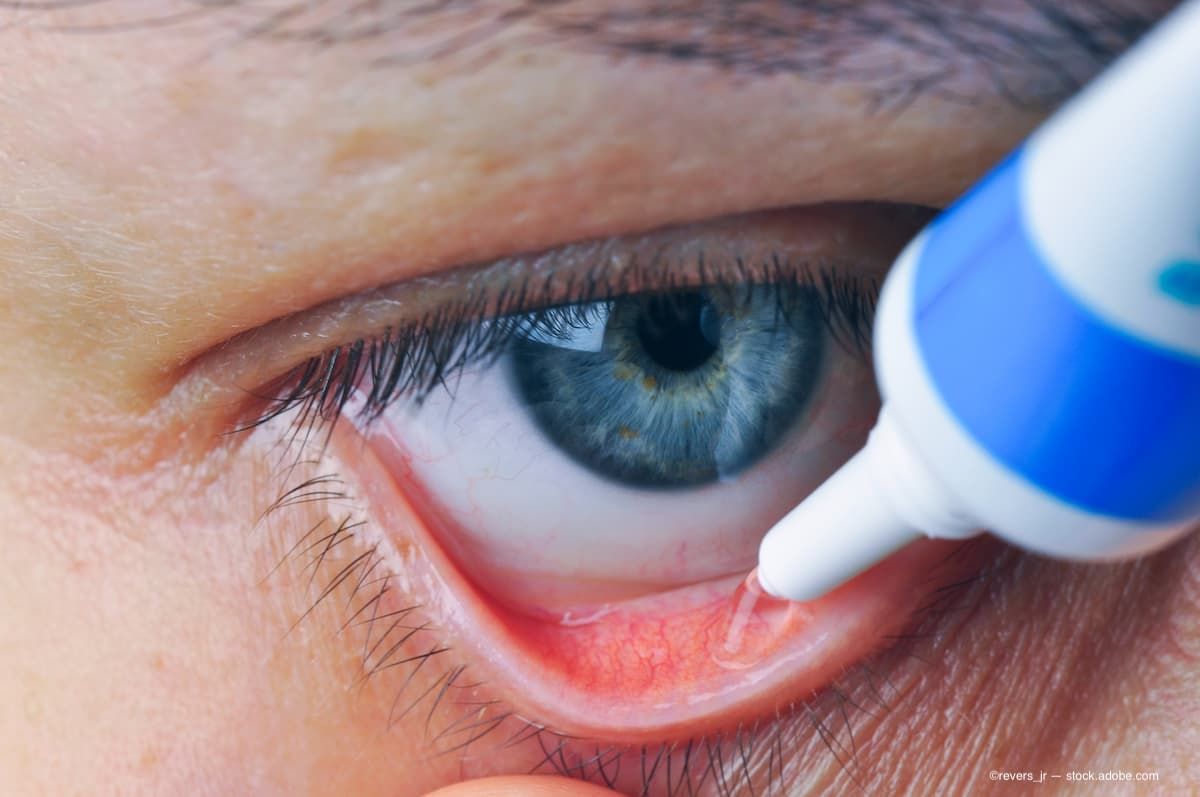Article
Harrow announces transitional pass-through reimbursement status for chloroprocaine hydrochloride ophthalmic gel 3%
Author(s):
According to the company, in a clinical trial of chloroprocaine hydrochloride ophthalmic gel in patients undergoing routine cataract surgery, patients treated with the gel did not require any supplemental treatment to complete the intended surgical procedure.
Chloroprocaine hydrochloride ophthalmic gel 3% is a sterile, single-patient use, physician-administered, ophthalmic gel preparation (Image credit: AdobeStock/revers_jr)

Harrow today announced the Centers for Medicare & Medicaid Services (CMS) has approved transitional pass-through reimbursement status for chloroprocaine hydrochloride ophthalmic gel 3%(IHEEZO), which is indicated for ocular surface anesthesia.
According to a news release, beginning April 1, and for the 3 years thereafter, chloroprocaine hydrochloride ophthalmic gel 3% will be eligible for separate reimbursement outside of the surgical bundled payment in both the Ambulatory Surgery Center (ASC) and Hospital Outpatient Department (HOPD) settings of care.
Chloroprocaine hydrochloride ophthalmic gel 3% is a sterile, single-patient use, physician-administered, ophthalmic gel preparation, containing no preservatives, for ocular surface anesthesia that was approved by the FDA on September 26, 2022.
The company noted in its news release that in a clinical trial of chloroprocaine hydrochloride ophthalmic gel 3% in patients undergoing routine cataract surgery, patients treated with the gel did not require any supplemental treatment to complete the intended surgical procedure. The gel also represents the first branded ocular surface anesthetic approved for the U.S. market in nearly 14 years.
Chloroprocaine hydrochloride ophthalmic gel 3% is contraindicated in patients with a history of hypersensitivity to any component of this preparation.
Horizon noted in its news release that CMS previously approved the issuance of a permanent, product-specific JCode (J2403), enabling access to chloroprocaine hydrochloride ophthalmic gel 3% for ophthalmologists, optometrists, and retina specialists for the in-office setting of care. This new CMS pass-through approval makes the gel the only ocular anesthetic with separate reimbursement in all traditional settings of care – the eyecare professional’s office, the ASC, and the HOPD.
The news release noted that CMS approves pass-through status to certain new and innovative medical devices, drugs, and biological products. Drugs that are administered in the ASC and HOPD settings can have pass-through status and be reimbursed accordingly by Medicare. By having pass-through status, chloroprocaine hydrochloride ophthalmic gel 3% will be separately reimbursed by Medicare at Average Sales Price (ASP) +6% in both the ASC and HOPD settings of care. Until an ASP is established, chloroprocaine hydrochloride ophthalmic gel 3% will be reimbursed accordingly at Wholesale Acquisition Cost (WAC) +3%.
“We are grateful to CMS for their approval of transitional pass-through reimbursement status for IHEEZO and for their support of our mission to make innovative ophthalmic prescription medications accessible and affordable,” said Mark L. Baum, chairman and CEO of Harrow. “With approximately 5 million cataract surgeries and more than 8 million intravitreal injections performed each year in the U.S., we believe that IHEEZO’s receipt of both a permanent JCode, which we announced on February 2, 2023, and now, passthrough reimbursement status, will contribute to greater patient access to this important new treatment to anesthetize the eye. We remain on track for the commercial launch of IHEEZO at the May 2023 American Society of Cataract and Refractive Surgery (ASCRS) meeting in San Diego.”
The company noted in its news release the gel should not be injected or intraocularly administered. Patients should not touch the eye for at least 10 to 20 minutes after using an anesthetic as accidental injuries can occur due to insensitivity of the eye. Prolonged use of a topical ocular anesthetic may produce permanent corneal opacification and ulceration with accompanying visual loss. Do not touch the dropper tip to any surface as this may contaminate the gel, which is indicated for administration under the direct supervision of a healthcare provider. The gel also is not intended for patient self-administration.
The most common adverse reaction is mydriasis (approximately 25%).
Newsletter
Don’t miss out—get Ophthalmology Times updates on the latest clinical advancements and expert interviews, straight to your inbox.





